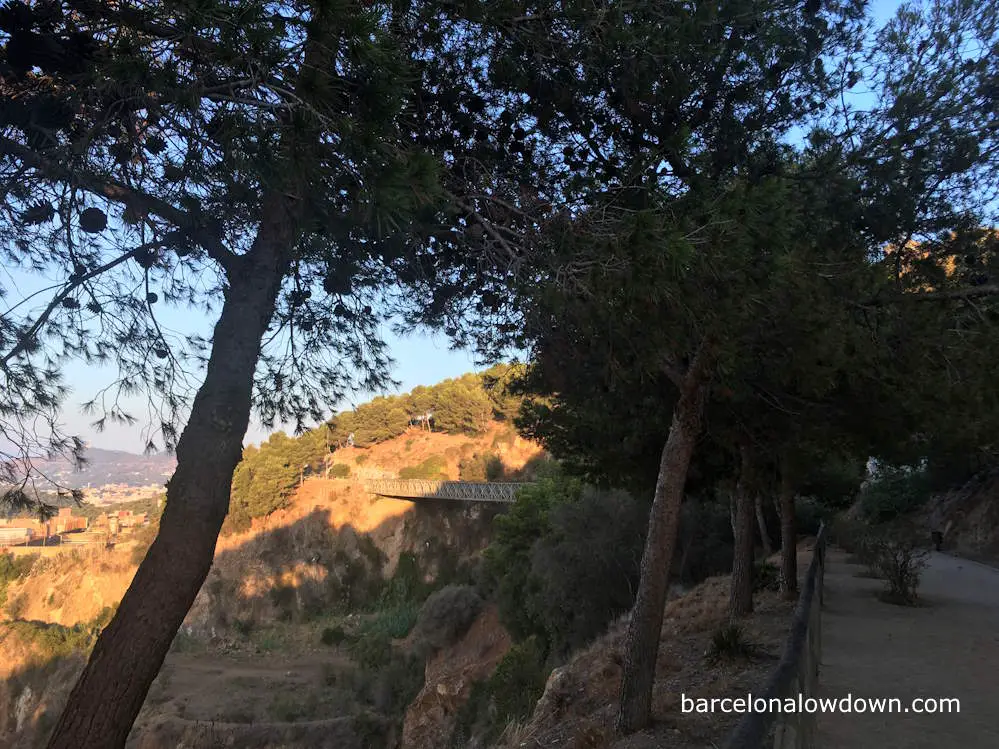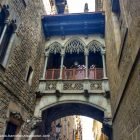Love locks have become a common sight in European cities since the early 2000s, after the release of the Italian film Ho Voglia di Te (English: I Want You). In the movie, two lovers inscribed their names on a padlock and attached it to a bridge in Rome.
Since then, the tradition has spread, and most cities now have a Love Lock Bridge, where couples attach padlocks as a sign of everlasting love.
Barcelona’s Love Lock Bridge is called Pont de Mühlberg and is located in El Parc del Guinardó, near the Bunkers del Carmel. The bridge, which was built in 1991, is a seventy-metre-long footbridge that gives access to the park and affords spectacular views of the city.
The easiest way to get there from Barcelona city centre is to take bus number 24 from Plaça de Catalunya. It’s also possible to walk to the bridge from Park Güell or as part of the Three Hills Walk.

What are love locks?
A love lock is a padlock that a couple locks to a bridge, a fence or a railing as a symbol of everlasting love. Normally, the padlock bears the lovers’ names and the date when their relationship started.
Some couples have their names professionally engraved on the padlock, while others use an indelible marker pen or Sharpie. Once the padlock is locked, the key is discarded, symbolizing an everlasting relationship.
The history of love locks
According to Wikipedia, love locks have their origins in Serbia during World War I.
The legend goes that a young schoolteacher named Nada from the town of Vrnjačka Banja fell in love with a Serbian officer named Relja. But, Relja was posted to Corfu shortly after they declared their love, where he fell for a local woman and ended his relationship with Nada. This broke Nada’s heart, and she passed away shortly afterwards.
After hearing of Nada’s death, young women from the town began writing their names and their lovers’ names on padlocks and attaching them to the railings of the footbridge where Nada and Relja used to meet, hoping that their love would last forever.

Other sources state that the tradition comes from China, where couples fix a padlock to a gate or a chain before throwing away the key. Once again, the idea is that by throwing away the key, the couple are pledging that their love will last forever.
Whichever story is true, love locks are now a common sight in cities around the world, and most capital cities have one or more love lock bridges.
Barcelona’s Love Lock Bridge
Pont de Mülberg (English: Mühlberg bridge) is a seventy-foot-long steel footbridge that gives access to El Park del Guinardo from the Can Baró neighbourhood. The bridge was built in 1991 and spans a ravine that was cut into the side of El Turó de la Rovira, one of four hills within Barcelona’s city limits.
Both the bridge and the park where it is located afford fantastic views, and the nearby Bunkers del Carmel has long been one of the most popular places for watching the sunset in Barcelona, although the bunkers are now closed shortly before sunset.
The peaceful location and panoramic views combine to make the Pont de Müllberg an ideal spot for fixing love locks, and at the time of writing, there were more than two hundred padlocks hanging from the bridge.

Other love lock locations in Barcelona
Although Pont de Mühlberg is arguably the most romantic place in Barcelona for love locks, it’s not the only place in the city where you’ll find them.
As you travel around the city, you’ll also see love locks attached to the fences surrounding Park Güell, at the viewpoint near the top of Mount Tibidabo and on railings at the Port Vell Harbour.
Location and how to get there
The bridge is located at Carrer de Mühlberg, 94, at the entrance to El Parc del Guinardo.
As mentioned at the start of this post, the easiest way to reach the bridge from the city centre is to take bus number 24 from Plaça de Catalunya.
You could also take the metro, line four to Alfons X and then walk to the bridge, through the Park de les Aigües and el Parc del Guinardó.
Map
Carrer de Mühlberg, 94




